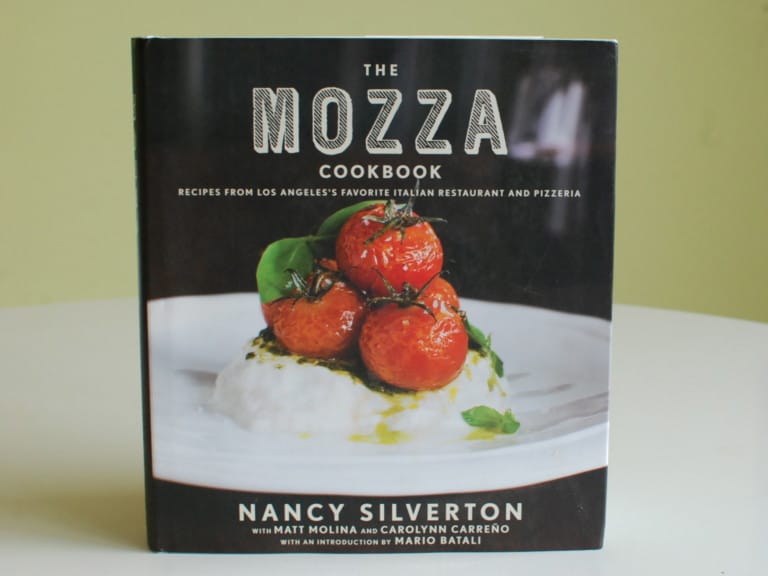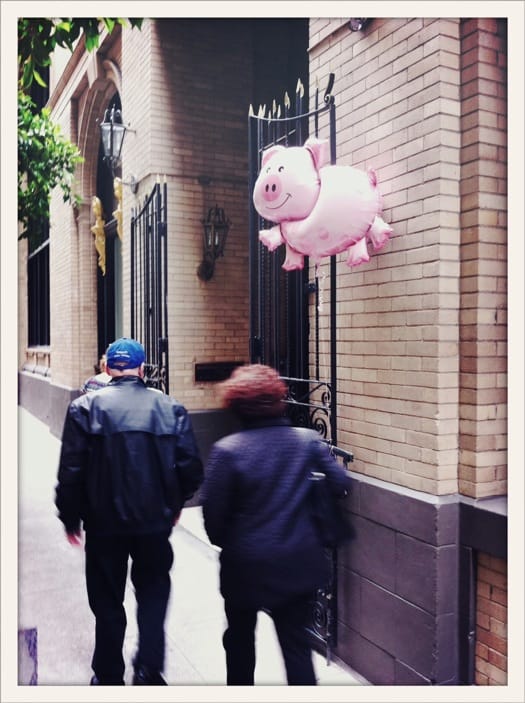I happen to be a vociferous consumer of food magazines. To me, they’re my monthly love affair, with my leering eyes shifting between the glossy and sometimes matted pages of these gluttonous publications. I lamented a few weeks ago the summarily executed closure of my favorite one of all, but now that the act has been done and the final issue has been published, I can’t help but wonder what the remaining brick-and-mortar or rather, ink-and-papyrus magazines can do to pick up the slack.
From the landscape that I see, there are now 4-5 major food publications, with others either on the fringe or catering to small niches of the newsstand. The three big players left, in my mind, are Saveur, Bon Appetit, and Food & Wine. These are the three that you’re most likely to see front-and-center on the Barnes and Noble Bookstand. They’re the ones with the broadest coverage and the largest constituencies, but they’re all deficient in some way.
Saveur seems to be the heir apparent to Gourmet’s stature as the top of the roost. The coverage is similar, the photos attempt to be as compelling, and the writing is almost as good. The travel writing isn’t as evocative as Gourmet’s, but the subjects span more countries and ethnicities while Gourmet tended to focus on small regions and communities across North America. The photos in Saveur don’t reach the quality or polish of Gourmet’s, mostly because they’re shot on location and with mostly ambient light. Though this method might be a money-saver, the photos in Saveur just don’t inspire like the ones in Gourmet or even Bon Appetit. Lastly, the layout needs to be improved on many levels. The typeface and the auxiliary coverage in the first half of the magazine seem to be from a magazine geared toward middle-aged aunties. Gourmet reached toward a trendy, but grounded urban readership. It was almost as if Gourmet Magazine’s readers wished they could be on a country farm or New England beach house.
Maybe Saveur’s catering to the red states, but I’m convinced the international and multicultural content is more apt to a sophisticated, urban readership. Saveur could take the place of Gourmet’s supremacy by becoming the general-interest food magazine that’s both authority and harbinger. Focusing on authentic cuisines is compelling, so I would keep that up. Saveur just needs to polish up, sharpen the photos (I can tell they’re all digital), and update the layout. And keep showing editor-in-chief James Oseland on Top Chef Masters. Soon enough he’ll have fraction of Ruth Reichl’s influence as culinary arbiter for the nation.
Bon Appetit’s stature as the home-cook’s ultimate manual has a limited lifespan in the ever-growing climate of high-quality food blogs available a finger-click away. The magazine has so many recipes it could keep a cook occupied for months. However, the restaurant coverage is superficial and scattershot at best, something best left to John Mariani in Esquire (though his recommendations carry a bit more weight). I much prefer GQ’s or Food & Wine’s restaurant coverage. I commend Bon Appetit’s high-quality photography, easy recipe-writing and polished prose from blogger-turned-author-turned-restaurateur Molly Wizenberg. Rather than striving for Gourmet’s status, Bon Appetit should continue to churn out recipes but start taking away some of Cook’s Illustrated’s readership. From my year-long subscription to Cook’s Illustrated, I realized that the limitations of that magazine, mainly recipe-overkill, can be combated by a more balanced catalog of monthly recipes. Bon Appetit has a perfectly fine trajectory toward the smart, young home cook, a clientele that will eventually overtake the Cook’s crowd. Though I appreciate Cook’s Illustrated, I really wonder how many readers are performing their often daunting and overly detailed-oriented recipes. If people have that much time on their hands, they’re probably already writing their own food blog.
Food & Wine is the magazine I’ve been subscribing to the longest. And during that time there have been very few months where I really felt compelled to read it cover to cover. For one thing, there was a too-obvious divide between the first part (food) and the second part (wine). The main problem I found with the wine part was that though it was chock-full of wine recommendations, I had no idea where I could get these wines. I consider myself fairly well-versed in wines, and much better than the average consumer, but even I found the dizzying list of wines to be overwhelming. If anything, Food & Wine needs to feature more outlets and distribution sources for these wines. As for the food part, the recipes and restaurant coverage were more than adequate. But the one thing that really annoyed me about F&W was the matted paper. For some reason the print and the photography just didn’t benefit from the more environmentally friendly paper. For a long time I thought that it was impossible to make a good-looking magazine with matted paper until I picked up Jamie Magazine when I was England. I was simply blown away by Jamie Magazine’s clean, modern layout and stunning photography. Jamie Oliver tends to favor matted paper and has made it look amazing in his cookbooks, so it’s no surprise that he was able to leverage this advantage for Jamie Mag. I actually see Jamie Magazine being a competitor for Saveur Magazine’s status as a top food magazine, but it’ll always be tied to the TV-chef and its UK-focused content. It’s a shame because the production values of Jamie Magazine rival even Gourmet’s.
Actually, seeing what Jamie Magazine has produced, I could see Saveur, Bon Appetit, or Food & Wine magazine adopting some of the Brit magazine’s qualities. For one thing, I found that the advertisements placed in Jamie were completely congruous and relevant for the reader. I didn’t see a jarring clash of layouts, colors, and photos from the main content. I found that I was incredibly interested in each of the advertisements in Jamie Magazine instead of skipping over them. If I were to tell this to Jamie’s advertisers I’m sure they would be quite pleased. If food magazines want to stay alive, the first thing they’ll need to do is retain their advertisers. The best way to retain advertisers is to convince them that readers are really looking at their messages in a relevant and easy-to-read manner. The next thing these magazines need to do capture compelling content in a way that blogs or other internet media can’t – through stunning photography, polished prose, and inside access to the newest and best in the industry.
It goes against more modern, corporate wisdom that these magazines should gain more general-interest readers and forsake deeper niches in the foodie world. What we’ve seen in the last few years is the deepening niche status of each of these blogs. While that’s all fine and dandy, there will always been room in the world for a leader, whether it be Apple, Google, The New York Times, or Toyota. These companies grow their scope because they need to take advantage as leaders in their various industries. Now that Gourmet has fallen, one or two of the magazines can fill that void and capture the highest number of readers (and therefore subscriptions and advertisers).
If not, these publications won’t be able to compete with the ever-diluted Food Network and its bevy of camera-happy celebrities whose magazines will only grow with the plug-in TV promotion. I cringe when I see Rachael Ray or Sandra Lee’s (seriously, why the hell is this lady still important?) magazines before the Big Three magazines on grocery store stands. It saddens me to think that while a large swath of Americans are turning to the Waters-Pollanian awareness for food politics and sustainability while an even greater margin is becoming diluted in the Semi-Homemade sludge that’s cramming the cable networks and newsstands. Blogs and internet food media fill a void of immediacy that can’t be filled by traditional print media, but if the magazines still have a heartbeat, they’d do best to create compelling content that ultimately supersedes the digital world.
We still have a long way to go before the Kindle Era comes to full maturity. And there are still plenty of used bookstores where readers are looking for that great book. Gourmet might reside in the print world graveyard, only to be admired for its excellence, but that doesn’t mean the survivors can’t continue its legacy in their own right.









Blog Comments
mattatouille
November 14, 2009 at 1:07 AM
Jill, pick up Jamie Magazine. To me it’s the perfect food magazine, other than the late, great Gourmet (that phrase might be used too often). This month is the “American” issue anyways, so it’ll actually be useful compared to other months. Also, take a look at an issue of Saveur and compare it side by side with Gourmet or Bon Appetit. The production values are just not the same. I still have to investigate other food magazines like Delicious, Cooking Light (which isn’t always about cooking “light” at all…), and Fine Cooking. But to me those are not as big as the other ones I mentioned.
mattatouille
November 13, 2009 at 2:15 PM
yeah i’m starting to realize i’m more of a geek about it than ever.
Jill
November 13, 2009 at 2:56 PM
Wow! I am going to have to get me some of these magazines. I did not realize how much I did not know about food. Thanks for the in-sight.
cm photography
November 13, 2009 at 11:09 AM
you are definitely a food magazine enthusiast my friend.